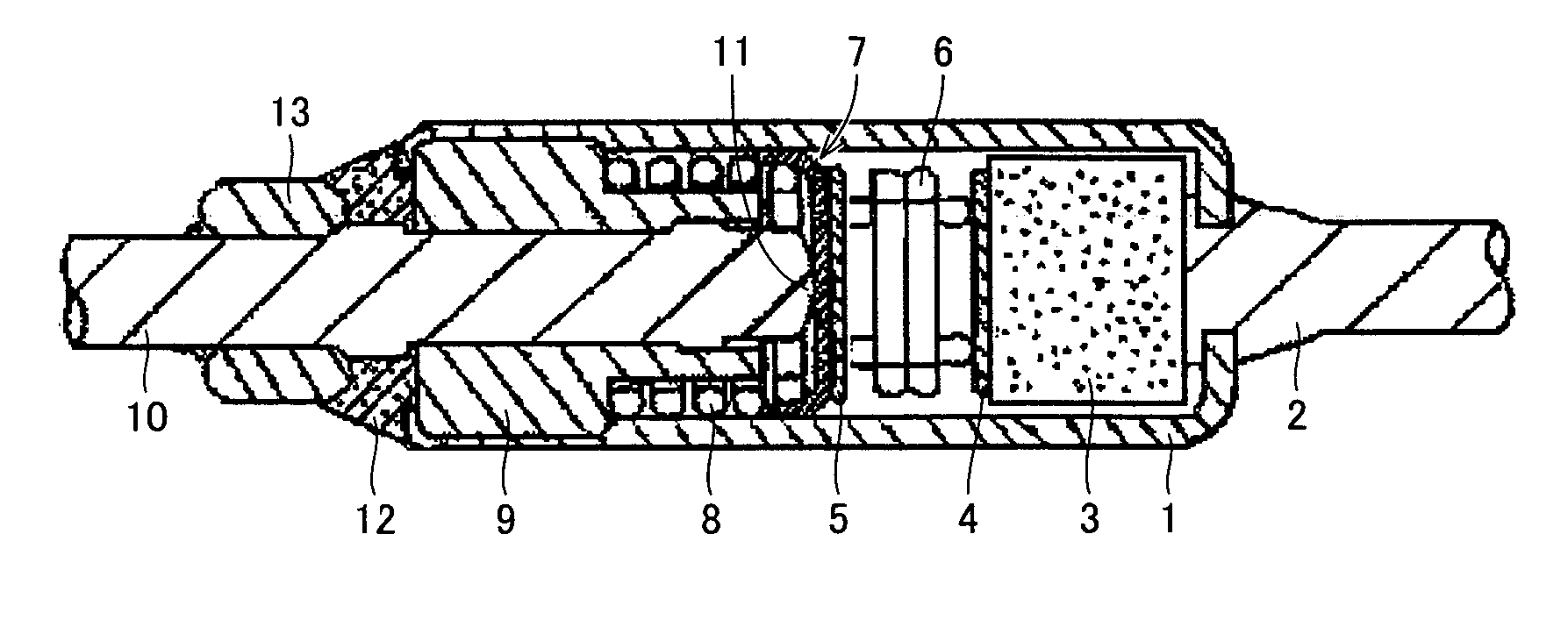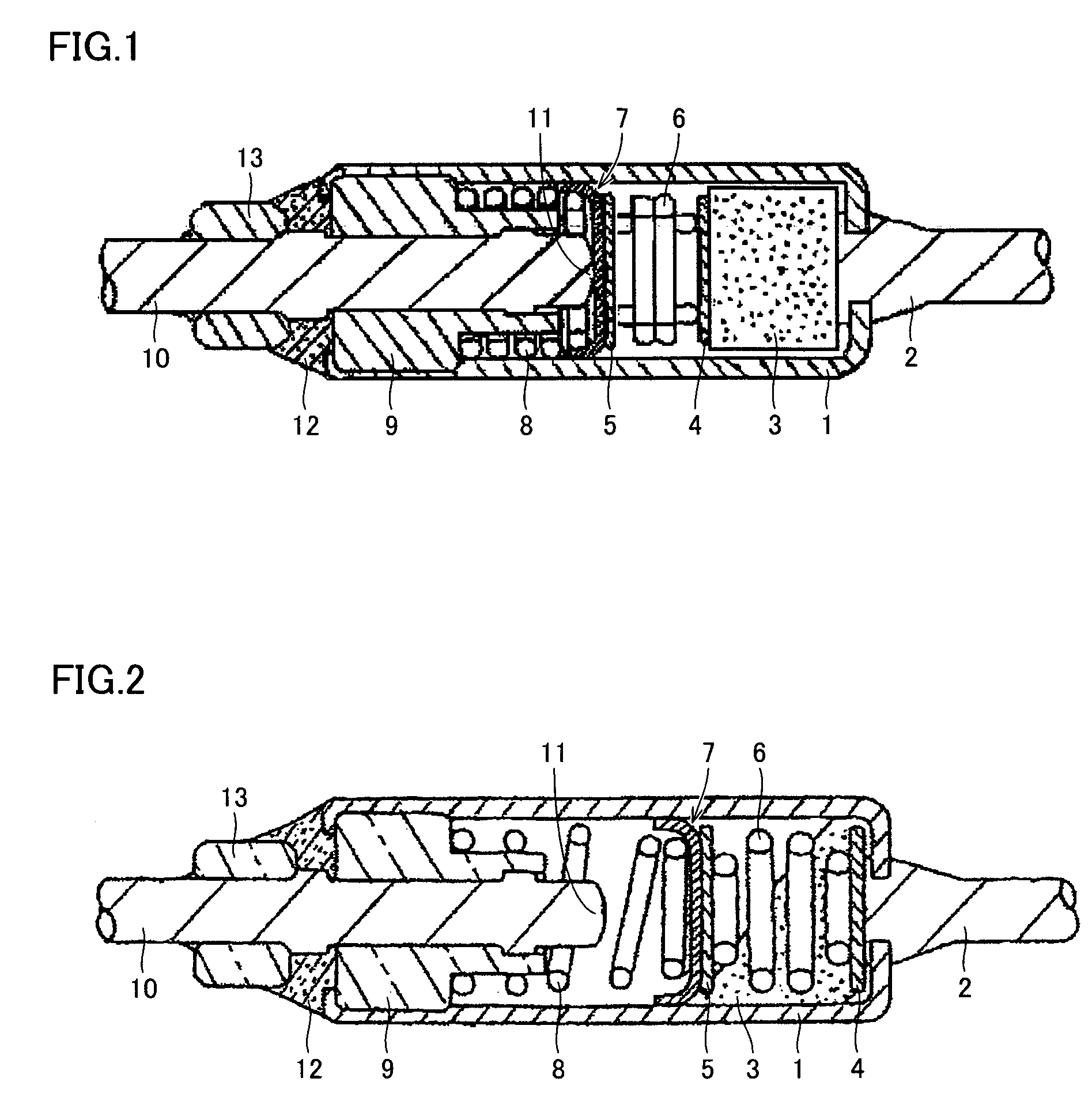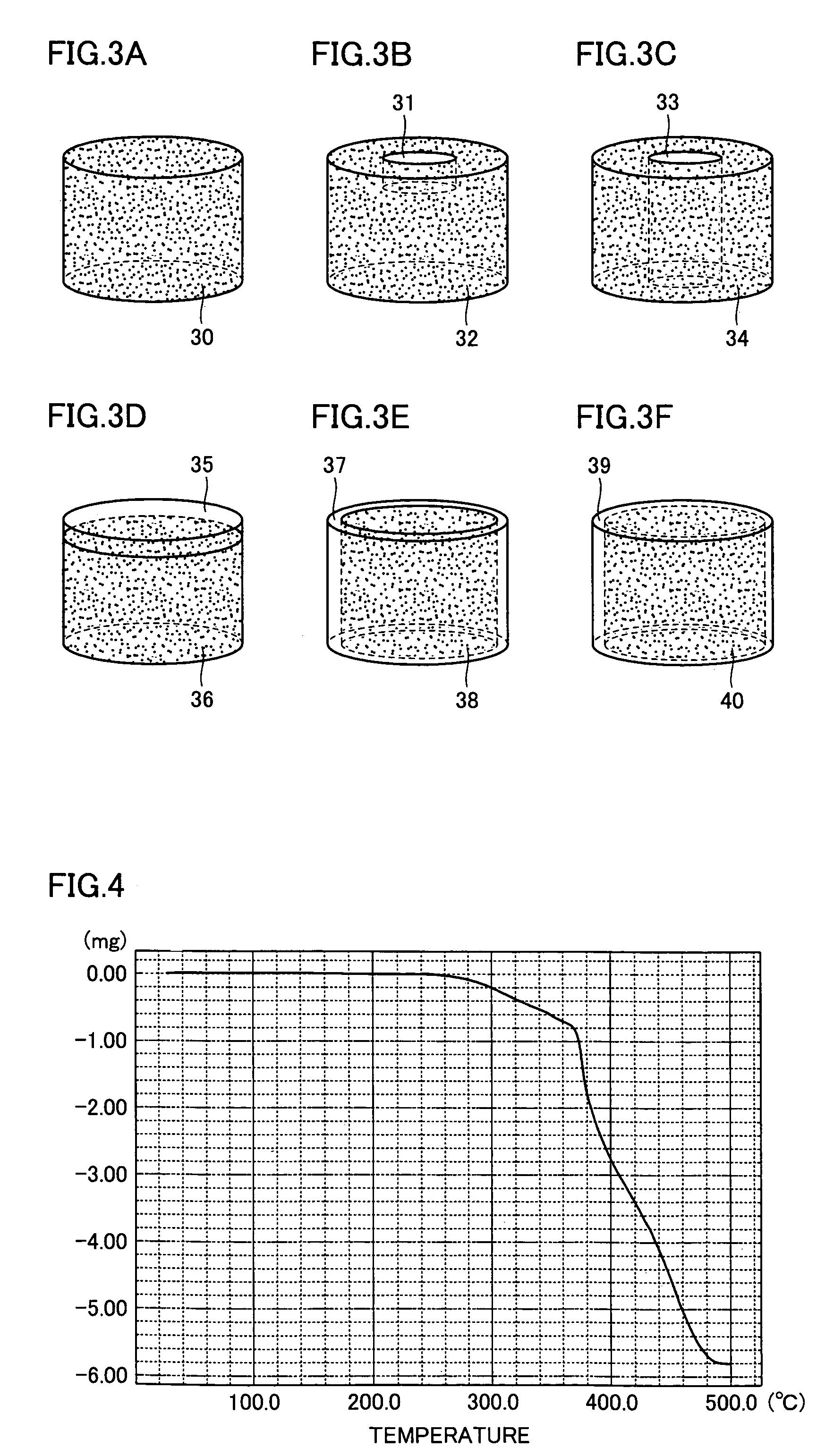Thermal pellet incorporated thermal fuse and method of producing thermal pellet
a technology of thermal fuse and thermal pellet, which is applied in the direction of thermally actuated switches, electric switches, electrical apparatus, etc., to achieve the effects of high response speed, quick response ability, and reduced production costs
- Summary
- Abstract
- Description
- Claims
- Application Information
AI Technical Summary
Benefits of technology
Problems solved by technology
Method used
Image
Examples
example 1
[0059]FIGS. 1 and 2 each show a cross section of a thermal pellet incorporated thermal fuse of the present embodiment. FIG. 1 is a cross section thereof at normal time at normal temperature and FIG. 2 is a cross section thereof in operation when it experiences abnormal heat. This configuration is similar in basic structure to a thermal pellet incorporated thermal fuse SEFUSE® produced by NEC SCHOTT Components Corporation except for material used for thermosensitive material. A cylindrical enclosure 1 is a casing formed of copper, yellow copper or similar satisfactorily heat conductive metal and having one opening with a first lead member 2 crimped and thus fixed thereto. Metal casing 1 accommodates a thermal pellet 3, a feature of the present invention, together with a component functioning as a switch including a pair of pressure plates 4 and 5, a spring member including strong and weak compression springs 6 and 8, and a movable conductive member 7 formed of silver alloy satisfacto...
example 2
[0081]An experiment is conducted on exemplary variations in geometry of thermal pellet 3 of the FIG. 1 thermal pellet incorporated thermal fuse, and for examining their functions and effects. Thermal pellet 3 typically has a substantially columnar structure, and a variety of exemplary variations thereof, as shown in FIG. 3, are evaluated. In accordance with the present invention, heat distortion temperature is set by a method including a method setting a special geometry, and this method is effective in adjusting an operating temperature as desired. FIG. 3 shows thermal pellets having six different geometries. FIG. 3A shows a general purpose, substantially columnar pellet 30. A substantial column can satisfactorily be incorporated in comparison with a quadrangular prism, and by modifying the column in length and diameter an operating temperature can be set as desired. FIG. 3B shows a pellet 32 provided with a recess 31. FIG. 3C shows a pellet 34 hollowed or provided with a cavity 33...
example 3
[0083]Thermoplastic resin employed in the present embodiment is used to form thermal pellet 3 to fabricate the FIG. 1 thermal pellet incorporated thermal fuse, and the fuse's operating temperature and variation (precision of operation: R) are indicated in Table 6. Furthermore, Table 7 indicates an insulation resistance value as an electrical characteristic for high temperatures of 350° C. and 400° C. In Table 7, “O” indicates an insulation resistance value of at least 0.2 MΩ at least for one minute and “X” indicates an insulation resistance value of less than 0.2 MΩ within one minute.
[0084]
TABLE 6unit (° C.)Conventional ProductsProductOperatingAtProductThermal Fuse Incorporating The Present Thermal PelletProduct113° C.OperatingPOMOperating3,5-At 192° C.RETLDPELLDPEHDPEF20-PPPBTPMPFEPAt 110° C.dimethyl4-methylNo.ET182JM910NAM830A1300J54J557F310RT18NP-101resorcinpyrazoleumbelliferone1101.2109.1125.8131.7163.3170.8227.6236.0268.3109.4112.3190.02101.7108.9125.6131.7163.3170.7227.4236.02...
PUM
| Property | Measurement | Unit |
|---|---|---|
| temperature | aaaaa | aaaaa |
| insulation resistance | aaaaa | aaaaa |
| temperature | aaaaa | aaaaa |
Abstract
Description
Claims
Application Information
 Login to View More
Login to View More - R&D
- Intellectual Property
- Life Sciences
- Materials
- Tech Scout
- Unparalleled Data Quality
- Higher Quality Content
- 60% Fewer Hallucinations
Browse by: Latest US Patents, China's latest patents, Technical Efficacy Thesaurus, Application Domain, Technology Topic, Popular Technical Reports.
© 2025 PatSnap. All rights reserved.Legal|Privacy policy|Modern Slavery Act Transparency Statement|Sitemap|About US| Contact US: help@patsnap.com



